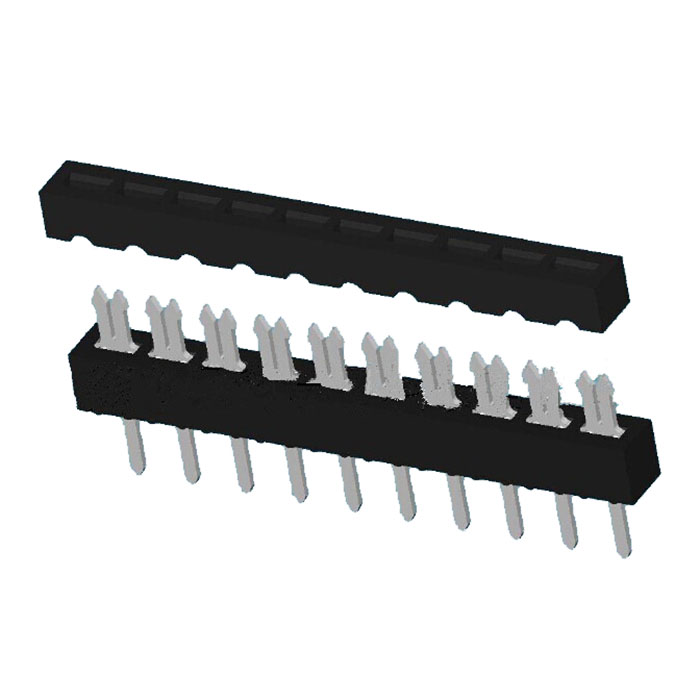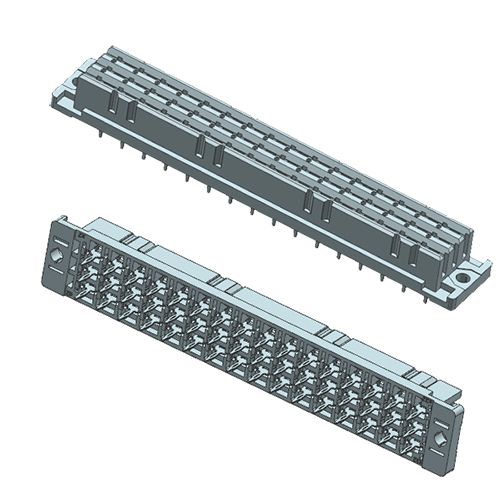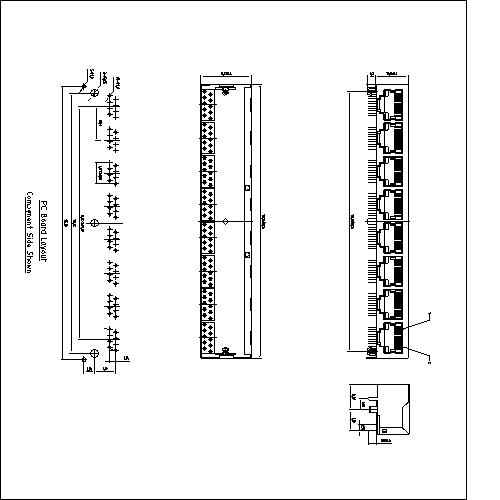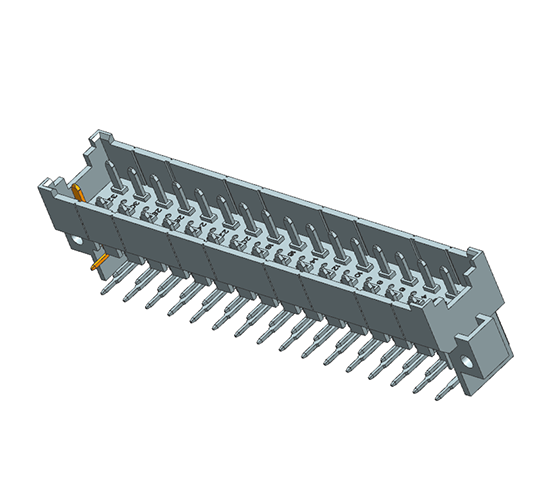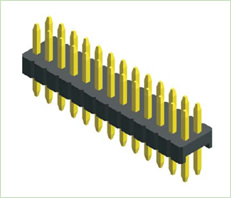D-sub Connector Contacts have a wide range of purposes and are used in various application areas. These contacts are primarily designed to establish secure electrical connections and transmit signals between different components in electronic devices and equipment. Some of the main purposes and application areas of D-sub Connector Contacts are as follows:
Computer and IT Equipment: D-sub Connector Contacts are commonly used in computer systems and IT equipment. They provide a reliable interface for connecting peripherals such as mice, keyboards, monitors, and printers to the computer. These contacts enable the transmission of signals and data between the computer and its peripherals, ensuring seamless communication and functionality.
Communication Devices: D-sub Connector Contacts are widely utilized in communication devices such as routers, modems, and networking equipment. They enable the connection of various components in these devices, allowing for the transmission of signals and data between different network interfaces. These contacts ensure reliable and efficient communication in networking applications.
Industrial Automation: D-sub Connector Contacts find extensive usage in industrial automation systems. They are commonly employed in control panels, PLCs (Programmable Logic Controllers), and other automation equipment. These contacts provide a secure and stable connection for transferring control signals and data between different components in industrial automation systems. They are designed to withstand harsh industrial environments and ensure reliable operation.
Medical Equipment: D-sub Connector Contacts are utilized in medical equipment, including diagnostic devices, imaging systems, and patient monitoring systems. They enable the connection of various medical components, allowing for the transmission of signals and data within these systems. The contacts are designed to meet specific medical standards and provide reliable performance in medical applications.
Aerospace and Defense: D-sub Connector Contacts are commonly used in aerospace and defense applications. They are employed in avionics systems, military communication systems, radar systems, and other aerospace and defense equipment. These contacts offer a secure and robust connection for transmitting signals and data in demanding environments, ensuring the reliable operation of critical systems.
Test and Measurement Equipment: D-sub Connector Contacts are widely utilized in test and measurement equipment. They enable the connection of probes, sensors, and other measuring devices to the equipment, allowing for the accurate measurement and analysis of signals. These contacts provide a reliable interface for transferring signals and data between the equipment and the measuring devices.
In conclusion, D-sub Connector Contacts are versatile components used in a wide range of applications. Their main purposes include establishing electrical connections, transmitting signals and data, and enabling the seamless operation of electronic devices and equipment. Whether it is in computer systems, communication devices, industrial automation, medical equipment, aerospace and defense, or test and measurement equipment, D-sub Connector Contacts play a crucial role in ensuring reliable and efficient connectivity.
4. How durable and reliable is it? D-sub Connector Contacts are known for their durability and reliability. These contacts are designed to withstand harsh conditions and provide a secure and stable connection.
One of the factors that contribute to the durability of D-sub Connector Contacts is their construction. These contacts are typically made of high-quality materials such as brass or phosphor bronze, which offer excellent conductivity and corrosion resistance. The contacts are often gold or silver plated to further enhance their durability and ensure reliable performance over time. The plating helps to prevent oxidation, which can degrade the electrical conductivity of the contacts.
In addition to their robust construction, D-sub Connector Contacts are designed to withstand mechanical stress and vibrations. They are engineered to provide a tight and secure connection, minimizing the risk of intermittent or unstable connections. The contacts are often designed with locking mechanisms or retention features to ensure that they stay securely mated, even in high-vibration environments.
Furthermore, D-sub Connector Contacts undergo rigorous testing to ensure their reliability. They are subjected to various tests, including electrical performance testing, mechanical stress testing, and temperature cycling testing. These tests are conducted to ensure that the contacts can withstand different environmental conditions and maintain their performance over a long period of time.
The reliability of D-sub Connector Contacts is also demonstrated through their widespread use in various industries and applications. They have a proven track record of providing stable and consistent electrical connections in critical applications such as aerospace, defense, and industrial automation. Many manufacturers of D-sub Connector Contacts provide extensive warranty and support to assure customers of their reliability.
It is important to note that the durability and reliability of D-sub Connector Contacts can also depend on factors such as proper installation, maintenance, and usage. Following recommended installation procedures and ensuring proper mating and unmating of the connectors can contribute to their long-term reliability.
In conclusion, D-sub Connector Contacts are highly durable and reliable components. Their robust construction, corrosion resistance, mechanical strength, and extensive testing make them suitable for demanding applications. Whether it is in harsh industrial environments or critical aerospace systems, D-sub Connector Contacts have proven to be dependable and provide secure electrical connections.
5. How does it work? D-sub Connector Contacts are essential components that facilitate the transmission of signals and power between different electronic devices and equipment. These contacts work by establishing electrical connections between the male and female connectors.
The male connector, also known as the plug, consists of a series of metal pins that correspond to the female contacts in the female connector, commonly referred to as the socket. The female contacts are housed in a dielectric insulator, which provides electrical isolation and mechanical support.
The male pins of the plug are designed to fit into the corresponding female contacts of the socket. When the plug is inserted into the socket, the pins make contact with the female contacts, creating a secure and stable connection. The male pins are typically made of brass or phosphor bronze, which provide excellent conductivity.
The female contacts in the socket are constructed with a tubular shape, allowing the male pins to slide into them. These contacts are often made of the same high-quality materials as the male pins and are gold or silver plated to enhance their conductivity and resistance to corrosion. The plating also helps ensure reliable and consistent electrical connections.
Inside the female contacts, there are spring-loaded mechanisms, such as cantilever beams or leaf springs, that exert a constant pressure on the male pins. This pressure helps to maintain a tight and reliable connection, even in the presence of vibrations or mechanical stresses. The spring-loaded contacts also compensate for any slight variations in the dimensions of the male pins, ensuring a proper and consistent mating.
D-sub Connector Contacts can transmit various types of signals, including analog, digital, and power signals. The number of contacts and their arrangement in the connector determine the specific functionalities and capabilities of the connection. Common D-sub Connector configurations include 9, 15, 25, and 37 contact positions, but there are also higher-density versions available.
The electrical signals and power are transmitted through the contact points, which are the areas of contact between the male pins and female contacts. These contact points provide low resistance paths for the signals, allowing for efficient transmission without significant signal loss or interference.
To ensure proper operation and optimal performance, it is important to follow the recommended installation procedures when connecting D-sub Connector Contacts. This includes aligning the pins with the corresponding contacts and applying proper insertion and extraction forces. It is also advisable to periodically inspect and clean the contacts to remove any debris or contamination that may affect their functionality.
In conclusion, D-sub Connector Contacts work by establishing electrical connections between male and female connectors. Through the mechanical mating of male pins and female contacts, these contacts facilitate the transmission of signals and power in various electronic devices and equipment. Their design, construction, and proper installation contribute to their reliable performance and efficient functionality.
Antenk Electronics Co., LTD., founded in 2007, located in Shenzhen, Guangdong, is one of the most economically developed cities in China. It is a well-known professional connector and
Cable Assembly manufacturer ,integrating mold development, production and sales.
The main products are board to board connector,
Wire To Board Connector, wire to wire connector ,
Pin Header ,female header, Box Header ,latch eject header, Din416 12,machined header and IC Socket ,
Idc Connector,D-SUB,RJ45,SCSI,IEEE 1394 ,
Battery Holder battery contact,
Battery Connector ,automobile connector and OBD connector, and a variety of terminal machine internal wire and computer peripheral wire and other products, the company's products are in line with the European Union ROHS and REACH environmental protection requirements, most of the products are UL certificated, our certification number is E472792.

